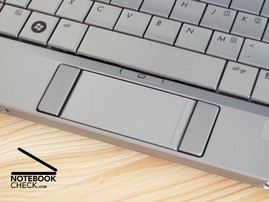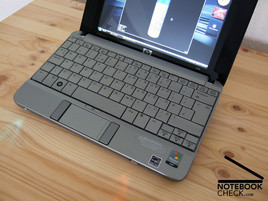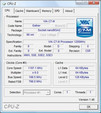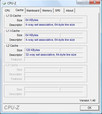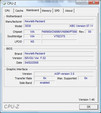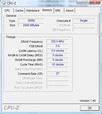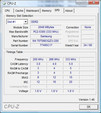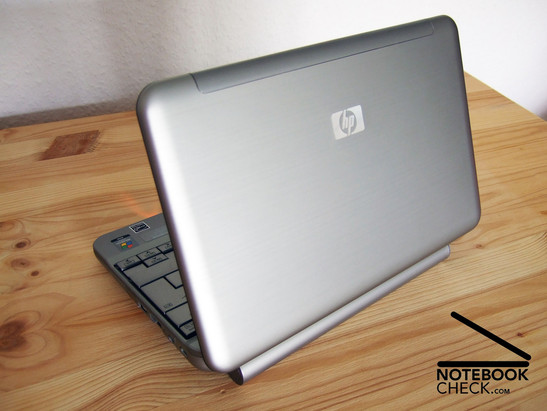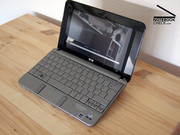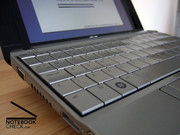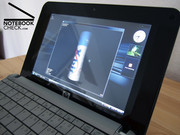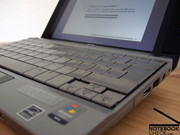Short Review Mini-Note 2133 Notebook
HP Goes Mini
HP's answer to the EEE PC by Asus is equipped with a VIA processor, and attracts attention by an elegant look and a complete equipment. The following short review covers how this small 8.9 inch notebook rates. We had the chance to test the UK version of this notebook during hardly a day.
Case
The HP Mini-Note is just 26.3 cm x 16.6 cm x 2.4 to 5.4 cm small. The weight is, including the provided 6 cells battery just 1445 gramme. This battery clearly projects the back of the notebook and increases the height of the notebook by about 1.5 cm. This improves the ergonomics of typing, because the keyboard inclines to the user, but is not very handy during transportation. If you want to put this notebook into a bag, you have to remove the big battery first. It has to be transported somewhere else. A 3 cells battery, which does not exceed the depth of the notebook, is also available, but, its battery runtime is of course shorter.
The design of the HP Mini-Note 2133 is decent, yet elegant in silver. The lid appears to be of high-quality and feels like including aluminium parts. The inside is made of plastics. Still the workmanship is good. The bottom part feels similar to the touch than the plastics used for the EEE series, but its quality seems to be a little poorer.
At the first glance the used materials seem to be robust and well adjusted to each other. Independent where you pick the notebook up, this notebook neither creaks nor deforms. If you heavily push against the lid, the content of the sensible LCD changes hardly, if at all.
Nevertheless, if anywhere, you'll find small weaknesses at the lid. The frames around the left and right speakers do not seem to be of high-quality. And the glossy LCD frame is sensitive to unsightly fingerprints when opening or closing the lid.
Peripheral Connectivity
The interface equipment of the HP Mini-Note 2133 is similar to those of other notebook of this price category. There are a total of two USB ports, a VGA port at the left hand side, and an ExpressCard54 slot at the right hand side. An SD card reader completes the connectivity.
The built-in WLAN card by Broadcom supports a, b, or g standard and transfers data at a gross transfer rate of up to 54 MBit/s. It is handy that you can simply switch WLAN off by a hardware switch at the front edge, if you do not need it. Wired data communication is possible via the built-in Gigabit LAN interface, which won't make you want faster connectivity. Mobile phones, PDAs, and other devices can be connected to this HP notebook via Bluetooth. The web cam is appropriate for short video chats.
You can connect an external optical drive. If you do so, one of the two USB ports will be occupied, but you won't need an external power supply for it. It should be the same device also offered for other HP notebooks, e.g., the HP Compaq 2710p.
Input Devices
Despite the small case of the HP Mini-Note, it still offers a fully-fledged notebook keyboard with 87 keys. Similar to most subnotebooks, the size of the hot keys is rather small. At least the letter keys are 1.7 cm x 1.6 cm big. So, their size is nearly as big as of an ordinary notebook.
So, it's no problem to type long texts with this notebook. In this aspect it hardly differs from other subnotebooks with 12 inch display. At the beginning the very short key travel and the imprecise mounting of the keys are odd. But, after you got used to them, it is user-friendly to type long documents. It's remarkable, that the reviewed notebook, an international notebook with English keyboard layout, had a big Backspace and a double-spaced enter key. However, multimedia keys are completely missing.
A disadvantage is that the key heads don't have a high-quality feel. They seem to be made of thin plastics, to keep the price of this mini notebook low. The black labels are also not clearly recognizable from the distance.
There was not much place for the touch pad, which is 6.2 cm x 3.3 cm, left. Its smooth surface allows an easy control and quick move of the mouse pointer. The two touch pad buttons are left and right beside the touch pad. Their travel is rather long, but the feedback good. It's handy that the touch pad can be easily switched off by a small button above it.
Display
The diagonal of this display is 8.9 inch. Nevertheless, the native resolution is 1.280 x 768 pixels. In contrast to the EEE and many other mini notebooks it is, therefore, possible to work as you are used to. The desktop size is sufficiently big for displaying web sites and applications just like on a 15.4 inch notebook. In return the font is of course clearly smaller. Nevertheless, it is very sharp and well legible.
The display surface reflects. This gets especially apparent if the notebook is turned off. In use this is not that obvious. We estimate that the luminance is about 180 cd/m². It should be sufficient bright for indoor usage, but probably too low for outdoor operation.
The viewing angles of this small display are surprisingly good. Horizontally the contrast decreases only slowly and if you look from top down the LCD stays rather well legible. However, looking from bottom up, the picture quality gets quickly too bad. To summarize, the viewing angles of this display are above average and the picture quality is good.
Performance
This HP notebook is equipped with a 1.2 GHz VIA processor. After a short time it gets already obvious that it cannot keep up with up-to-date Intel or AMD CPUs. Especially software installations are clearly slower on this pre-installed Windows Vista Business system as on reasonably up-to-date Sempron or Celeron notebooks.
At least this computer comes with 2 GB RAM, a 120 GB hard disk by Seagate (Seagate Momentus 5400.4 ST9120817AS), and an integrated video chip by VIA. The Aero desktop of Windows Vista is no problem for this video chip. However, the performance clearly drops if you activate transparency. Vista runs clearly smoother without these nice optical gimmicks.
If you solely browse the Internet or run Word this mini Note gives a rather good impression. Due to a big RAM capacity and a really fast hard disk the daily work is trouble-free and relatively fast. It is also no problem to run videos in AVI format on the Mini-Note. However, tasks which require more CPU performance, e.g., picture editing, quickly increase the response time. The reviewed notebook required about one and a half minute for booting.
The performance index of Windows Vista displays 1.7 points for this notebook. According to this test, the weakest component is by far the CPU. It achieves 1.7 points. The hard disk, which is the most powerful component, achieves 5.3 points and the video card 2.9 (desktop performance) respectively 2.5 points (gaming).
| Windows Vista Experience Index | |||
| Settings | Value | ||
| CPU | 1.7 Points | ||
| RAM | 3.4 Points | ||
| GPU | 2.9 Points | ||
| GPU Games | 2.5 Points | ||
| HDD | 5.3 Points | ||
Emissions
System Noise
The HP Mini-Note is very quiet with standard office load. The hard disk decently rustles, and the fan is not audible most of the time. If you install huge software packages, the fan starts running after a few minutes and keeps running for a longer time. However, its noise won't be recognizable in an open-plan office. At home, you'll hear a silent rustling if you are close to the notebook. And even this is not note-worthy. Even under full load the notebook doesn't get louder than that.
Temperature
Due to the low fan activity and a standard hard disk, the HP Mini-Note gets clearly warmer. Especially the right under-side of the notebook gets slowly, but steadily warmer. After about one hour of intensive use, the temperature should be about 33-35°C at the left hand side of the under side, and about 25-27°C at the keyboard and at the palm rest areas (all valuations!). This doesn't disturb, but is palpable.
Battery Runtime
The HP Mini-Note is offered with two different batteries in the USA and in England. According to the manufacturer the wattage of the 3 cells battery, which is flush with the case, is 28 watt-hours. We tested the 6 cells battery, which has a wattage of 55 watt-hours, but projects over the backside of the case by about one and a half centimetre.
The small HP Mini-Note did very well in our short battery test with BatteryEater. Windows Vista Business run with full load and maximum brightness longer than two and a half hours. The runtime was four and a half hour without WLAN and with minimum brightness.
Verdict
During the short test time, the HP Mini-Note convinced by some very interesting features. This small notebook provides everything needed for the daily work in a very small place. The main advantages are a nearly fully-fledged keyboard, a good, but, unfortunately reflecting, WXGA display, and possibly a long battery runtime.
Due to WLAN interface, Bluetooth, a card reader, and ExpressCard54 slot, and two USB ports also the connectivity leaves hardly anything to be desired. Finally, also the design is elegant and the workmanship and the feel are surprisingly good.
The calculation performance is an ambivalent aspect. The slow 1.2 GHz VIA processor cannot be called very powerful at all. But, this notebook comes with two GB RAM and a fast hard disk. As long as you merely want to browse the Internet and write text documents, this equipment should allow a smooth work even under Windows Vista.
Except of the low CPU performance, only few weaknesses got apparent during our short test of the HP Mini-Note. If any, the high price compared to the EEE-PC and the low calculation performance are disadvantages. Finally, you'll get rather complete full-size notebooks with clearly more performance for the same price. However, these are not that mobile, have likely a lower battery runtime, and are not so cool as the small Mini-Note by HP.
Today the test sample costs about 800 Dollar (about 500 Euro) in the USA. It is likely that this notebook will be launched in the German speaking region in autumn. The local prices are unknown at the time of writing.







